John Hurrell – 17 November, 2012
Mixing film with ceramics is indeed bold, though visually understated. Much of the imagery is about deconstructing (or deflating) its own processes, focussing on the movement of air. We see the residue from ‘hairy' air expelled from the drier, wads of thin clay pressed over mouths that have been sucking in or exhaling out, the ceramic remains of dropped clay puffballs, and at the beginning baked clay balls pierced by nail holes or pressed into wooden corners.
Auckland
Annie Bradley
Swallowing the Sun
14 November - 17 November 2012
In this eccentric bunker of a gallery, we find within St Paul St Three, a winding path that connects two levels. This zigzagging trajectory goes up a concrete ramp (with dominant metal hand rail) to take us to the isolated components of Annie Bradley‘s show, eight stations spread apart throughout the space, many of them involving fired ceramics.
Her title Swallowed by the Sun seems to allude to Russian film making, particularly Nikita Mikhalkov’s 1994 masterpiece Burnt By the Sun, but the video Bradley includes, of a spinning camera filming a disc of woolly clothes drier lint taken from its filter, has a subtle hallucinatory aspect where the filmed substance briefly starts to move backwards: a possible reference to the swirling sea in Tarkovsky’s Solaris. (The artist’s statement mentions Sisyphus constantly rolling his massive stone.)
Mixing film with ceramics is indeed bold, though visually understated. Much of the imagery is about deconstructing (or deflating) its own processes, focussing on the movement of air. We see the residue from ‘hairy’ air expelled from the drier, wads of thin clay pressed over mouths that have been sucking in or exhaling out, the ceramic remains of dropped clay puffballs, and at the beginning baked clay balls pierced by nail holes or pressed into wooden corners.
The other ingredients in Bradley’s show consist of a photograph of seven cushions leaning against the back of a sofa that includes wrinkles on the fabric where somebody has sat. The bodily interaction with materials is repeated with another photograph of thin clay pressed over a man’s hands. The last element in the sequence is an A4 sized sheet of glass, covered with blue paper and plastic which has wrinkled, it seems, because of applied heat and pressure.
There is a balanced symmetry in the series of ‘clues’ or ‘chapters’ of Bradley’s exhibition. The order you look at them is very calculated, and you can work your way back in pairs from the ends to the middle, going in the order of impressed clay balls / wrinkled plastic, video / photographs of drier lint, photo of hands / clay on mouth parts, and cushions / burst puffballs. The end-to-end sequencing of course matches the loop of the video, the spinning motion of its content and the lint disc itself. Bradley obviously likes structure that, while repeating, is carefully layered - and with further interconnections within each strata.
With this skeletal framework there is a sort of poetry to this work, an evocative aspect that draws in references like film and children’s parties (clay as balloons). Terrific fun to dig around in for associations - and explore.
John Hurrell
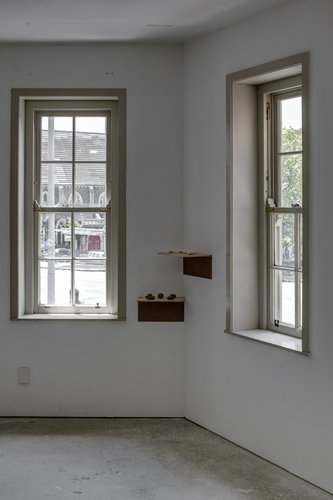

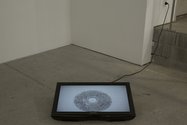

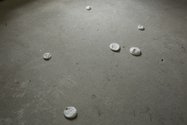

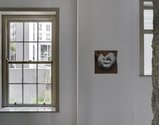


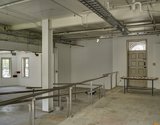

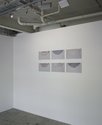
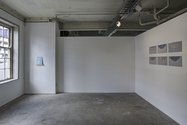

 Two Rooms presents a program of residencies and projects
Two Rooms presents a program of residencies and projects Advertising in this column
Advertising in this column



This Discussion has 0 comments.
Comment
Participate
Register to Participate.
Sign in
Sign in to an existing account.